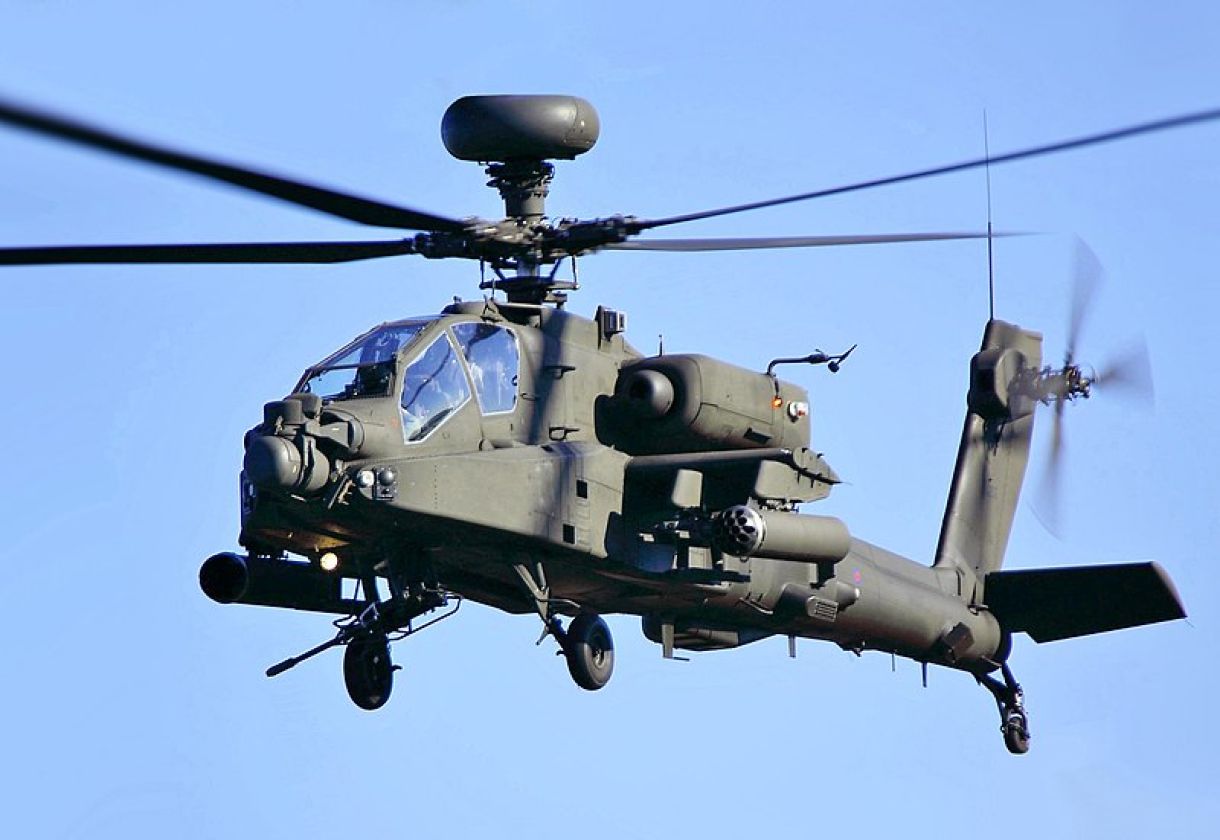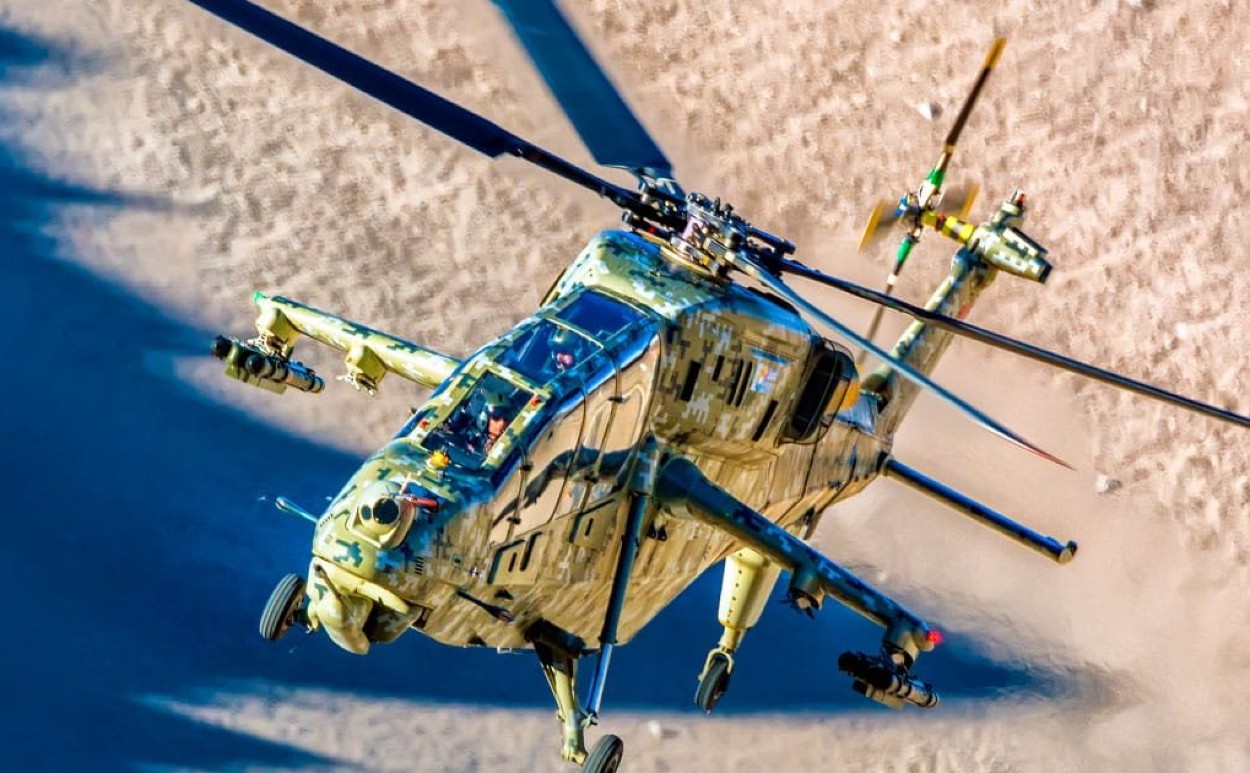The delayed Apache AH-64E attack helicopters are not the Indian Army’s first choice for high-altitude warfare. Instead, the indigenously developed Light Combat Helicopter ‘Prachand’ (Fierce) will be deployed in Ladakh along the China border in 2025.
Boeing’s Apache has been delayed for over six months. The first three helicopters are expected to be delivered by December 2024. The manufacturer has cited supply chain issues as the reason for the delay. The final delivery is likely to be made by early 2025.
The Apaches, also known as ‘tank killers,’ will be deployed in the deserts, where they are best suited for countering armor. The first Apache unit will be based at Nagtalao Army Base near Jodhpur.
The 451 Army Aviation squadron was raised at Nagtalao near Jodhpur on March 15, anticipating the arrival of the US-made helicopters. The helicopter base is fully ready to operate the Apaches. In 2020, the army ordered six Apache attack helicopters from the US for more than ₹4,100 crore.
‘More Powerful’ Than Benjamin Netanyahu, Meet 4 Jews Ranked Higher Than Israeli PM By JPost
Armed with fire-and-forget Hellfire missiles, the Apache can track up to 128 targets a minute and prioritize threats. The missiles equip the gunships with heavy anti-armor capabilities. The helicopters will help India strengthen its posture against Pakistan.
The Indian Air Force (IAF) has already inducted Apache in its fleet. The IAF has deployed its Apache attack helicopters in Ladakh, which provided tactical support to the ground forces when needed. However, the helicopter’s operability on the upper reaches of the Himalayas has been questioned.
US-Made AH-64 Apache Still Stuck Near China Border, High Altitude Makes Recovery Difficult For India
In 2024, an IAF helicopter was stranded at a high altitude for several months because it was proving difficult to bring the rotary-wing aircraft down. The IAF inducted the first batch of US-made Apache AH-64E at the Pathankot Air Force Station and the second one in Jorhat, Assam.
This is where the indigenous LCH will factor in. Prachand has a higher operational envelope as it is specifically designed for high-altitude conditions. “We have already tested the Apache helicopters in the operating conditions and have decided to deploy in the desert condition,” an Indian Army official told the EurAsian Times.
The Indian AH-64E Guardian version features a more powerful engine, better data networking, and improved composite rotor blades. Engine performance and load-carrying capacity (of helicopters or aircraft) decrease drastically at high altitudes. Flying at the limits of the aircraft requires the meticulous calculation of its ‘all-up weight.’ A few extra kilograms of cargo could have lethal consequences.
The US deployed Apaches over the mountains of Afghanistan in 2002, operating at around 12,500 feet above sea level, but the pilots were required to perform performance planning before each mission.

The LCH has demonstrated an ability to operate in these conditions. In 2015, an LCH conducted several test landings on the Siachen glacier in Ladakh at altitudes up to 15,800 feet while carrying a modest 500-kilogram (1,102-pound) load.
The Defence Acquisition Council has already approved the procurement of 156 LCH at an estimated cost of ₹45,000 crore ($5.5B), 90 for the Army and 66 for the IAF. These are in addition to the 15 limited series production LCH being procured — 10 for IAF and five for the Army — at a cost of ₹4,264 crore. In addition to the LCH, the Army operates 75 Rudra helicopters, the armed version of the advanced light helicopter.
How Does LCH Stack Up Against Apache?
Both the Boeing AH-64 Apache and the HAL’s LCH are two-seat multi-role attack helicopters. There is not much difference between the two choppers in terms of weight. The Apache is 3,148 kilos lighter than the LCH.
The LCH is powered by two Shakti turboshaft engines, each producing 1,430 horsepower. The Boeing Apache helicopter is powered by two General Electric T700 GE 701C turboshaft engines, each producing 1,890 horsepower. The Apaches’ powerful engines allow them to achieve a top speed of 295 kph, while the LCH’s maximum speed is 280 kph.
LCH has another advantage over Apaches—endurance. It can tail a target for up to 700 kilometers while flying at a height of 6,500 meters. The Apache only has a range of 480 kilometers and can reach a ceiling of 6,400 meters.
LCH Prachand’s engines are produced in collaboration between HAL and France’s Safran company. It can operate at the world’s highest battleground – the Siachen Glacier.
The pilot and co-pilot, known as the Weapon Systems Operator (WSO), sit in tandem in a glass cockpit and are protected by armored panels.

The weapon complement includes a 20mm nose gun in the front, capable of firing 800 rounds per minute from a range of up to 2 km. A 70mm rocket pod is mounted on the stub wing, with a direct firing range of up to 4 km and indirect up to 8 km.
Above the gun is an electro-optical pod for long-range day and night surveillance and target tracking. Anti-tank guided missile ‘Dhruvastra’ and French air-to-air missile ‘Mistral-2’ have a maximum interception range of 6.5 km.
Indian LCH can also be deployed in various roles, including tracking slow-moving aerial targets, insurgency, destroying enemy defenses, search and rescue, anti-tank, and scouting.
The Army is looking for another 95 LCH and the IAF another 65. However, the contract has yet to be worked out, and their induction is spread over the next 10-15 years. The Indian Army plans to eventually deploy 70 of its LCH in the mountains.
Wing Commander Saurabh Sharma, who is also the Flight Commander of Dhanush Squadron 143 Helicopter Unit, which operates these helicopters, described his experience flying the machines: “To quote a famous boxer, Mohammed Ali, all I can say is this machine flies like a butterfly and stings like a bee.”
At high altitudes, this bee is going to sting India’s adversaries, keeping them at bay.




